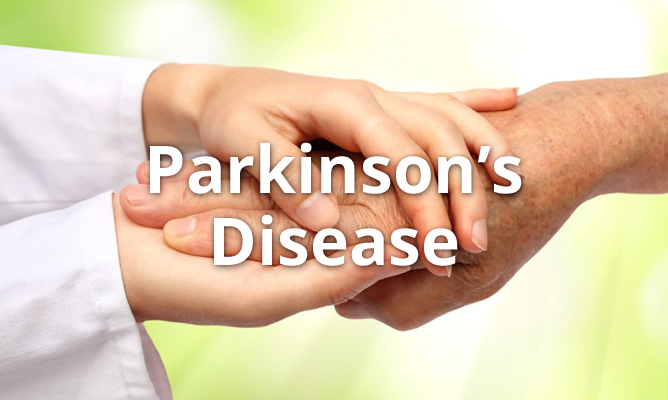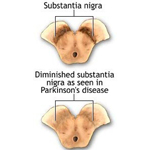
Managing Parkinson’s Disease Symptoms With Medical Marijuana
Introduction to Parkinson’s Disease (PD)
Parkinson’s Disease (PD) is a neurodegenerative disease that is caused by destruction of dopaminergic neurons (i.e. cells of the nervous system that make and release dopamine, a signalling molecule) in the substantia nigra (SN), an area of the brain involved in regulating movement. Patients with Parkinson’s Disease experience tremors, slowed movement, muscle stiffness, balance issues, sleep disturbance, and more. Parkinson’s Disease is a debilitating disease with no cure, although there are treatment options available. For patients with PD with difficult-to-control symptoms, or for those who are experiencing severe negative side effects from standard therapy, cannabinoid medicine may provide necessary relief in some instances.
Parkinson’s Disease Symptom Control
According to a recent study published in Clinical Neuropharmacology, participants using smoked medical cannabis had significant improvements in motor disability and impairment. These results were found in addition to reported decreases in tremor (repetitive shaking), rigidity (stiffness or inflexibility), and dyskinesia (difficulty in performing voluntary movements), and improvements in pain and sleep disturbance. This study was flawed in that it included only 22 participants, there was no blinding to treatment (i.e. both the participants and researchers knew that they were using cannabis, which means that the results were potentially a result of “expectancy effects”), and they used a “within-subjects” design, which has well-documented weaknesses. Still, these results show that further study is appropriate and warranted.
In a study published in the Journal of Psychopharmacology in September 2014 found that treatment with 300 mg/day of the cannabinoid cannabidiol (CBD) in patients with Parkinson’s Disease, without dementia or comorbid psychiatric conditions (i.e. those occurring at the same time as the primary disease), increased well-being and quality of life compared to patients who had received the placebo (an inactive treatment used to attempt to control for “expectancy effects”). However, there was no improvement in measures of motor (i.e. movement) and general symptoms, and no evidence for possible neuroprotective effects, and the sample size was small, with only 21 participants split into 3 groups (placebo, 75 mg/day CBD, and 300 mg/day CBD). In spite of the lack of significance in certain measures and the small sample size, these results are impressive, especially given that the increase in well-being and quality of life resulted from use of a non-psychoactive cannabinoid.
Relief for Less “Characteristic” Symptoms of Parkinson’s Disease
While there is limited evidence that has been gathered evaluating cannabinoid medicine and medical cannabis use as treatment for Parkinson’s Disease, there is a wealth of information on the effects of these options on symptoms often experienced by patients with Parkinson’s Disease, such as pain and sleep disturbance. According to a post on the Parkinson’s Disease Foundation website by Blair Ford, M.D., “Descriptions of Parkinson’s Disease do not generally include the mention of pain. And yet, when carefully questioned, more than half of all people with Parkinson’s disease say that they have experienced painful symptoms and various forms of physical discomfort.” There is mounting evidence that cannabis may be useful for some patients in managing chronicpain. Additionally, evidence for relief from symptoms experienced by patients with Parkinson’s Disease, such as depression and anxiety, has been discovered with the use of cannabinoid therapy. Cannabis use may also provide relief to patients experiencing nausea and vomiting, potential side effects of certain standard PD medications.
Anecdotal Evidence Surrounding Parkinson’s Disease
No large, placebo-controlled, randomized, double-blinded clinical trials have been conducted on the effect of whole-plant cannabis on patients with Parkinson’s Disease, meaning that there is no evidence that a cause-effect relationship exists showing that cannabis use improves symptoms or slows progression for patients with Parkinson’s Disease.
When the evidence on cannabis in relation to a certain disorder is limited, we can turn to patient stories for anecdotal evidence that medical marijuana may provide relief for some patients, especially those with symptoms uncontrolled by standard therapies. A recent blog post, “The goal of medicine is to balance evidence with stories” highlights the important point which is its title. Given the favorable safety profile of medical cannabis and potential for low-risk experimentation for most patients, patient stories help in guiding healthcare professionals to which symptoms/disorders may be alleviated by the use or study of cannabinoid medicine.
According to David Esparza, a patient who has lived with Parkinson’s Disease for over 13 years and has experienced negative side effects from standard therapy, “[Cannabis] helps me with my attitude, it helps me with my shaking, it helps me deal with my new life… I don’t know how I look to other people… but I know what I feel like [when using cannabis]… I feel good.” He shares his story here.
Parkinson’s Disease Treatment
According to a study published in Journal of Neurology, Neurosurgery and Psychiatryin 2013, the cannabinoid THC (the psychoactive cannabinoid) also may prove useful in the treatment of Parkinson’s Disease by (1) assisting in the prevention of damage caused by free radicals and (2) activating PPARγ, a receptor whose stimulation leads to the formation of new mitochondria (the part of cells that produces energy). This study was covered in greater detail previously on Medical Jane.
Additionally, there is mounting evidence that cannabinoids have the potential to work as neuroprotective agents (i.e. those that protect destruction of neurons) through processes such as improvement of function of mitochondria and the activation of cellular debris clearance. Increased research will help us to explore and harness any potential neuroprotective effects of cannabinoids. Please click here for more information on the potential for cannabinoid medicine use in the treatment of neurodegenerative diseases.
Endocannabinoid System Findings
The chart below is a summary of information available on the endocannabinoid system in patients with PD from the review “The influence of cannabinoids on generic traits of neurodegeneration”, Fagan & Campbell, 2014. Note: CB1 and CB2 receptors are those to which cannabinoids bind and thereby exert their effects, “projecting areas” are parts of the brain to which dopaminergic neurons travel and release dopamine, “AEA” is anandamide and “2AG” is 2-arachidonoylglycerol (both are endocannabinoids, which are cannabinoids found naturally in the body), “the globus pallidus” is a component of the basal ganglia, an area of the brain involved in movement control, FAAH is an enzyme that acts to increase levels of AEA. According to the authors, “AEA levels in the cerebrospinal fluid of untreated Parkinson’s Disease patients were found to be more than double that found in age-matched controls. Interestingly, AEA levels returned to control levels in patients receiving chronic dopamine replacement therapy (Pisani et al., 2010).”
Conclusion
According to a recent overview of medical marijuana and Parkinson’s Disease by Dr. Michael S. Okun on the National Parkinson Foundation website, “Marijuana should never be thought of as a replacement for dopaminergic and other approved therapies for Parkinson’s disease. Second, though most available large studies have not shown a benefit, that does not mean that there will not be a benefit. Much more research will be needed to understand which patients, which symptoms, and how best to safely administer medical marijuana in Parkinson’s disease, especially over the long-term. It may turn out that non-motor features such as depression, anxiety, and pain respond best, but studies are desperately needed to sort this out.”
Given the highly favorable safety profile of whole-plant cannabis, and the severely debilitating symptoms caused by Parkinson’s Disease, it may be a safe and useful additional therapy for patients with Parkinson’s Disease who are finding it difficult to control their symptoms with standard therapies. Increased research on cannabinoid medicine and modulation of the endocannabinoid system in relation to Parkinson’s Disease and other neurodegenerative diseases has the potential to not only lead to symptom management for patients, but also potentially to novel therapies which may help to prevent progression, and potentially initiation, of the disease.
For information on reasonable expectations and safety in considering whole-plant medical cannabis use, as well as how you can advocate to move cannabis out of the Schedule I controlled substance classification in order to increase research on phytocannabinoids in the United States, click here.
